How Microplastics Are Invading Human Brains: What Scientists Are Urging in 2024
Contents
- 1 How Microplastics Are Invading Human Brains: What Scientists Are Urging in 2024
- 1.1 Understanding Microplastics: What Are They?
- 1.2 How Microplastics Enter the Brain
- 1.3 Health Risks: The Silent Danger to Mental Health
- 1.4 Scientists’ 2024 Call to Action
- 1.5 What You Can Do to Protect Yourself
- 1.6 The Road Ahead: Innovation and Hope
- 1.7 Conclusion: A Future with Less Plastic
- 1.8 read more posts
- 1.9 FAQs with Answers
- 1.10 read more posts
Read DISCLAIMER
Learn how microplastics are invading human brains and what scientists are urging in 2024. Explore the health risks, the latest research, and actionable solutions to protect yourself from this invisible threat.
Over the past ten years, microplastics—tiny plastic particles smaller than five millimeters—have grown to represent a serious environmental and health risk. The scientific world is becoming increasingly concerned in 2024 about the possibility that these pollutants could enter the brain, an area of the body that is not thought to be contaminated. As the body of data linking microplastics to neurological harm grows, scientists are urging quick action.
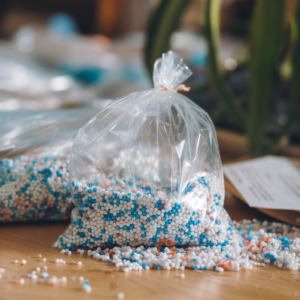
Understanding Microplastics: What Are They?
Microplastics are little particles of plastic, usually less than five millimeters, which arise from the disintegration of larger plastic objects due to environmental exposure. Typical sources include commonplace items like shopping bags, plastic water bottles, and synthetic fabrics like polyester apparel. These plastics break into smaller pieces over time due to mechanical wear, heat, sunshine, and other factors.
These tiny plastic particles are everywhere in our surroundings, contaminating ecosystems and assimilating into the air, water, and soil cycles. As microplastics go up the food chain, studies have revealed that they can be found in the food we eat, the water we drink, and the air we breathe. For instance, because of their pervasive contamination, microplastics can be found in fruits, vegetables, seafood, salt, and honey.
Recent studies have revealed the presence of microplastics in a number of bodily components. They may have harmful impacts on health because they have been found in human lung and blood tissues. Disturbingly, new research indicates that microplastics may be able to get past biological barriers and into the brain. There is still more to learn about this developing field of research, which indicates that tiny particles may interfere with normal brain cells processes and cause inflammation or other health problems.
Since scientists are still figuring out how microplastics will affect human health in the long run, the discovery of microplastics in the brain represents an important new frontier in environmental and health studies.
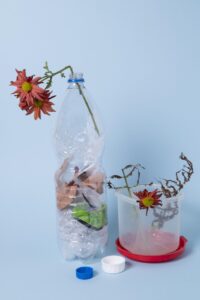
How Microplastics Enter the Brain
Microplastics can cross the blood-brain barrier, an important barrier that protects the brain from dangerous compounds circulating in the bloodstream, according to recent research findings. The majority of poisons and infections are prevented from entering the brain by this highly selective barrier. Microplastics, however, seem to be able to get past this protective mechanism.
Inhalation is one suggested entrance point for this. The respiratory system may be exposed to airborne microplastics. After then, they might proceed through the nasal passages and eventually get at the olfactory bulb, a structure at the base of the brain that is in charge of processing smell. This area has direct connections to the brain and offers a way for drugs to get across the blood-brain barrier completely.
It’s alarming that microplastics can enter the brain in this manner, especially considering the possible health hazards of prolonged exposure. Since the brain is so sensitive to outside stimuli, any interference with normal brain function can have detrimental effects like inflammation, injury to the nervous system, or disruption of neuronal processes.
Even while research is still in its infancy, the finding that microplastics can penetrate the brain emphasizes how urgently further studies are needed. Researchers are trying to learn more about the entire spectrum of possible effects on brain function, especially since people are always surrounded by microplastics. Chronic exposure to these contaminants may have an impact on cognitive function, neurological health, and the onset of neurodegenerative disorders.
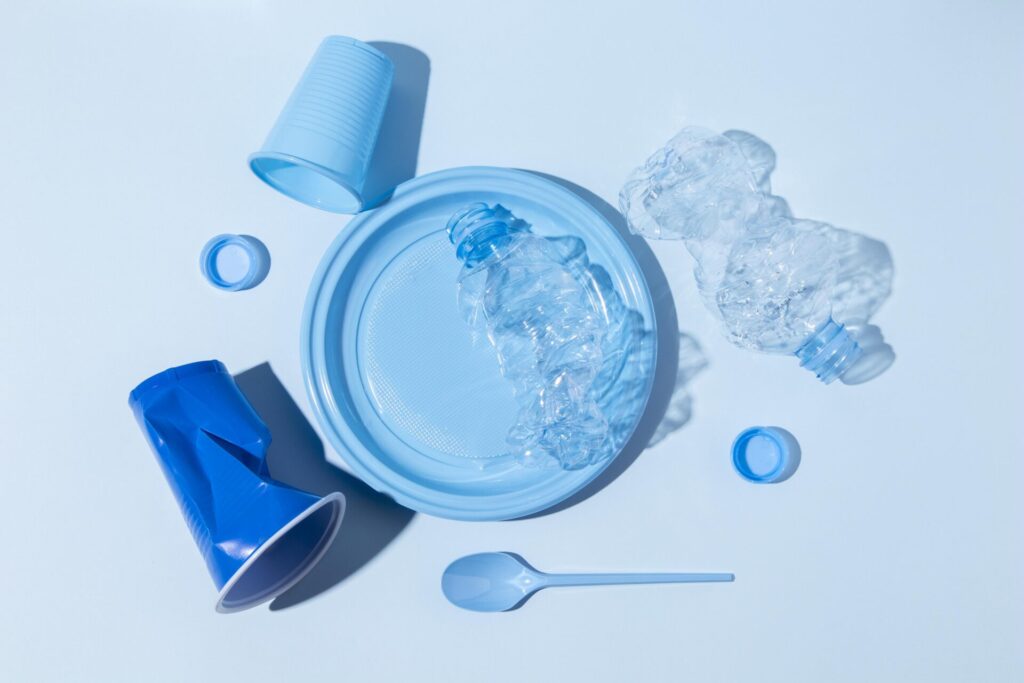
Health Risks: The Silent Danger to Mental Health
A hidden but potentially serious health risk, microplastics in the brain are especially harmful to mental and neurological health. These tiny particles may have a variety of negative consequences on the brain once they get inside. One of the main issues at hand is inflammation. Microplastics have the ability to incite the body’s immune system by acting as foreign invaders. Because it can harm brain tissue and interfere with neurological processes, inflammation in the brain is especially harmful and can have long-term effects on cognitive function.
The potential of microplastics to interfere with brain function is another serious danger. Microplastics may obstruct the complex chemical and electrical signals that neurons in the brain use to communicate with one another. Neural signaling abnormalities can impact learning, memory, and brain function generally, which can lead to cognitive decline. These alterations may perhaps potentially hasten the onset of neurodegenerative illnesses such as Parkinson’s and Alzheimer’s, in which the brain gradually loses its capacity for normal function.
Additionally, preliminary research suggests that long-term exposure to microplastics may cause memory loss and cognitive impairment. Long-term exposure to microplastics may impact brain health in a similar manner to other environmental pollutants, although further research is necessary. For example, decreases in cognitive function have been linked to exposure to contaminants such as air particles and heavy metals; it is possible that microplastics will behave similarly.
The possibility that microplastics could carry hazardous substances is a serious worry. Hazardous materials from the environment, such as pesticides, heavy metals, and industrial chemicals, are frequently absorbed by these particles. These substances may be released by microplastics once they have pierced brain tissue, which could result in more harm. Greater harm than only microplastics could arise from the combination of the physical irritation caused by the plastic particles and the harmful effects of the chemicals they contain.
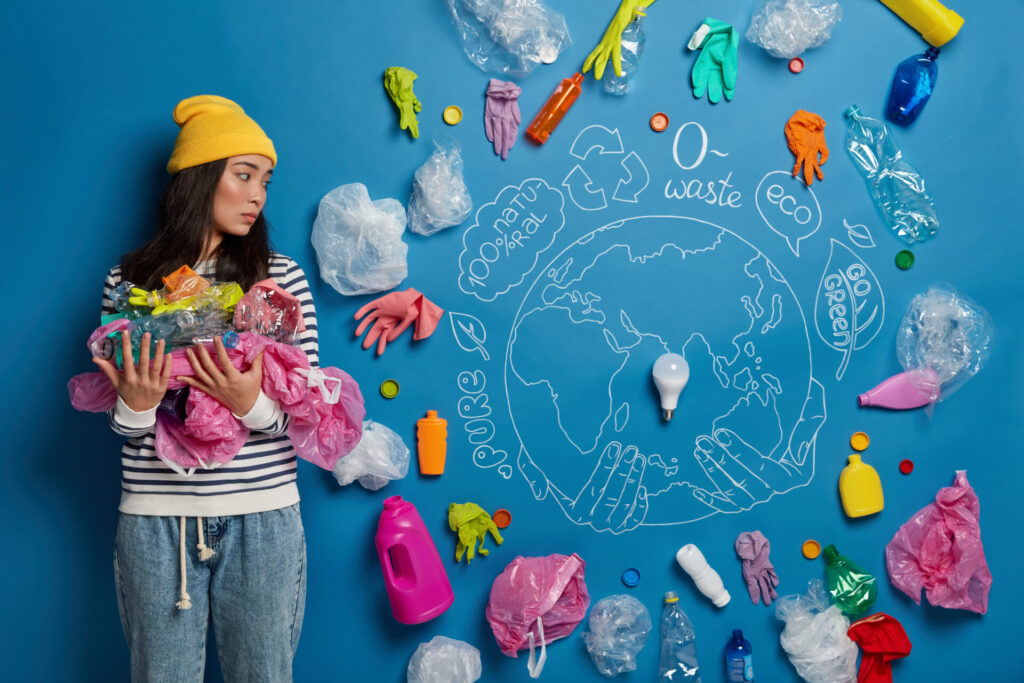
Scientists’ 2024 Call to Action
Scientists are urging governments, businesses, and the general public to act immediately in 2024, highlighting the critical need to address the growing issue of microplastic pollution. Their suggestions emphasize the significance of lowering plastic production, shielding people from exposure, and funding studies to properly comprehend the effects on health, especially the brain.
1. Reducing Plastic Waste
Governments should prioritize taking decisive steps to reduce plastic waste at its source. The following actions are necessary for this:
– Stricter Regulations : Governments must enact stricter legislation to restrict the manufacturing and consumption of non-recyclable plastics. Single-use plastics (bags, straws, packaging) can be discouraged from being used widely by enacting laws that prohibit or price them.
– Promoting Biodegradable Alternatives : It is essential to support industry in creating and implementing compostable or biodegradable substitutes for conventional plastics. Materials science advances have the potential to produce new goods that decompose safely and don’t pollute the environment with microplastic residues.
– Recycling Improvements : Governments have to spend money enhancing recycling infrastructure around the world to guarantee that plastic garbage is recovered and processed more effectively. The amount of plastic that ends up as garbage can be decreased by promoting circular economy techniques, which reuse and repurpose plastics instead of discarding them.
– Waste Management Infrastructure : Improving waste management systems might lessen the amount of plastic debris that seeps into rivers and oceans, especially in developing countries. Plastic can’t degrade into microplastics in the environment if waste is collected and processed properly.
2. Personal Protection
Individuals also play a crucial role in reducing microplastic exposure. Scientists are advising the public to take several steps to minimize personal risk:
– Reducing Single-Use Plastics : People are urged to use reusable substitutes like cloth bags, refillable water bottles, and glass or metal containers. This lowers the amount of plastic waste produced as well as the demand for plastic products.
– Filtering Drinking Water : Microplastics can be found in both tap and bottled water, so it’s best to use premium water filters made to collect microplastics. A large amount of these particles can be eliminated by basic home water filtering systems, which lowers intake.
– Choosing Plastic-Free Products : Individuals can choose wisely to steer clear of plastic packaging while buying food and other home products. Selecting goods that are wrapped in paper, metal, or glass can help decrease environmental contamination and restrict exposure to microplastics.
– Reducing Synthetic Clothing Use : Washing releases microplastics from synthetic fabrics like nylon and polyester. People can lessen this by using laundry bags that catch microfibers while they are being washed or by buying clothing made of natural fibers, such as cotton or wool.
– Air Purifiers : Using air purifiers with HEPA filters in homes and offices helps lessen inhalation of airborne particles since microplastics can also be found in the air, especially in urban areas or close to industrial zones.
3. More Research
Scientists stress the need for urgent and ongoing research to fully understand how microplastics affect human health, particularly the brain:
– Health Impact Studies : The interactions between microplastics and biological systems once they are within the body need to be further studied. This involves being aware of their long-term impacts on mental health and brain function as well as how they get through biological barriers like the blood-brain barrier. Extensive research is necessary to determine whether exposure to microplastics may be linked to diseases including Parkinson’s, Alzheimer’s, and other neurodegenerative disorders.
– Tracking Exposure Pathways : To determine how microplastics enter the body—by eating, breathing, or even via the skin—and where they are found in tissues and organs, more research is required. This is especially important for vulnerable populations like children and the elderly.
– Developing Mitigation Strategies : The goal of science should also be to lessen the consequences of microplastics once they get into the body. This could entail creating tools or materials to help eliminate or neutralize microplastics, or it could entail creating medications or other treatments to offset the harm they do to tissues.
– Environmental Monitoring : To estimate the amount of microplastic in various habitats, including rivers, soil, the atmosphere, and oceans, more precise monitoring techniques need to be implemented. This will make it possible to design policies and carry out more focused interventions to manage pollution hotspots.
4. Industrial Innovation
Industries can contribute significantly by adopting sustainable practices:
– Plastic-Free Production : By making investments in green technologies that employ recyclable, compostable, or biodegradable materials in production processes, industries can lessen their need on plastic. This is particularly crucial for sectors like consumer products, apparel, and packaging.
– Responsible Disposal : In order to stop plastic trash from getting into the environment, industries must also put in place appropriate disposal and waste treatment procedures. A better filtering system that collects microplastics before they are discharged into water bodies is one way to do this.
5. Public Education and Advocacy
Raising public awareness about the dangers of microplastic exposure is essential:
– Education Campaigns : The public can be educated by governments, non-governmental organizations, and other groups on how to lessen their exposure to microplastics and how to reduce their own imprint.
– Consumer Advocacy : Customers can encourage businesses to use more environmentally friendly production and packaging techniques. Selecting goods from companies that care about the environment can inspire more sectors of the economy to convert to environmentally friendly options.
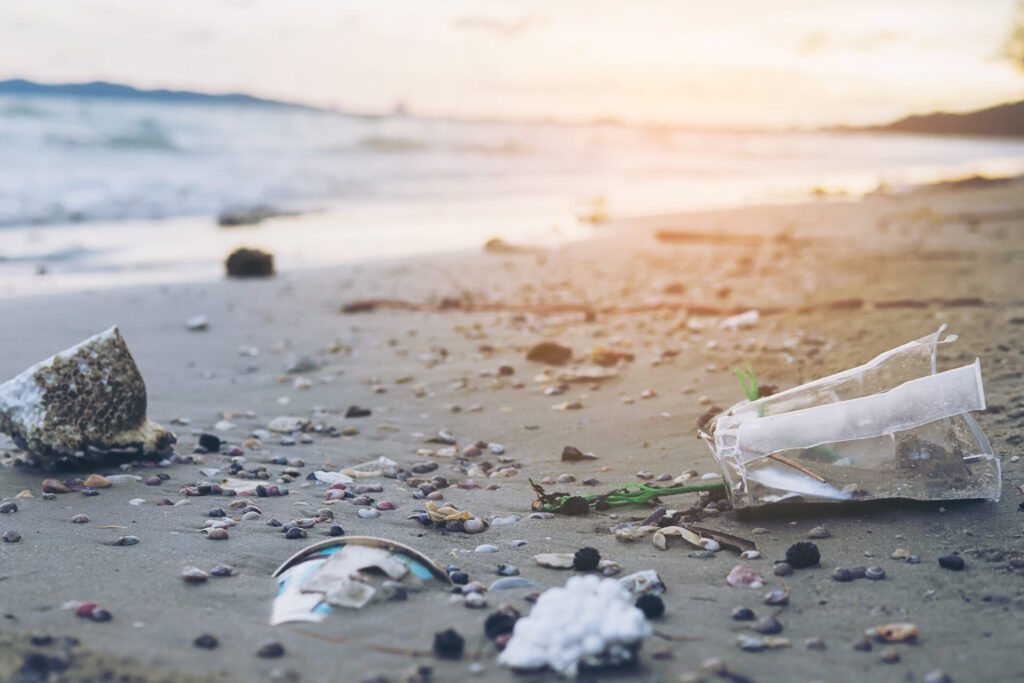
What You Can Do to Protect Yourself
There are doable actions people may take to lessen their daily exposure to microplastics while scientists and legislators strive toward long-term solutions to combat microplastic pollution. Assuming accountability for reducing individual risk is a crucial approach to safeguard your health and advance more general environmental objectives. The following are specific steps you can take:
1. Filter Your Drinking Water
Worldwide, tap water has been shown to contain microplastics, even in many nations with highly developed filtration systems. Take into account the following to lessen the quantity of microplastics you consume through water:
– Invest in a high-quality water filter : Select a filter that is made expressly to collect tiny particles, such as microplastics. Activated carbon filters, ceramic filters, and reverse osmosis systems are some of the greatest choices for drastically lowering pollutants.
– Use filtered water for cooking : Consumption of microplastics can result from using unfiltered tap water when cooking, so it’s not just about what you drink. You can cut your intake even more by cooking rice, pasta, and other foods in filtered water.
– Opt for glass or stainless steel water bottles : Be mindful that bottled water may also contain microplastics if you depend on it. Use your filtered tap water in a reusable glass or stainless steel bottle to reduce your use of single-use plastic bottles rather than purchasing bottled water.
2. Choose Natural Fibers
Every time synthetic clothing is laundered, microfibers, a form of microplastic, are released into the environment from materials like polyester, nylon, and acrylic. These little particles have the potential to enter water systems and ultimately find their way into the food and water we drink. By taking these actions, microfibre pollution can be reduced:
– Opt for natural fibers : Opt for clothing made of natural fabrics like silk, cotton, linen, hemp, or wool whenever you can. These textiles are less prone to discharge dangerous microplastics into the environment and are biodegradable.
– Use a microfiber-catching laundry bag or filter : Use specialist laundry bags or filters that capture microplastics while washing synthetic clothing if you own any. These particles can be caught by products like the Guppyfriend bag or washing machine filters, keeping them out of streams.
– Wash synthetic clothes less frequently and at lower temperatures : Reduce the number of times you wash synthetic clothing, use cold water, and steer clear of tumble drying. These procedures lessen the amount of microplastics that escape from your clothes.
3. Avoid Plastic Packaging
Plastic packaging is another significant source of microplastic contamination, and avoiding it wherever possible can reduce your overall exposure:
– Choose eco-friendly alternatives : When purchasing household or grocery items, make an effort to choose things that are packaged in paper, glass, or metal. Not only are many of these materials recyclable or compostable, but they also do not degrade into microplastics.
– Buy in bulk : Buying in bulk helps you bring in less plastic packaging into your house. When shopping for grains, spices, and other dry goods in bulk, bring your own reusable containers and bags.
– Use reusable bags and containers : Instead of using plastic shopping bags, use reusable ones made of cotton or other environmentally friendly materials. Use glass, silicone, or stainless steel containers rather than plastic wrap or bags to store food.
– Support brands that use sustainable packaging : A lot of businesses are starting to use sustainable packaging options in response to environmental issues. By endorsing companies who put an emphasis on environmentally friendly packaging, you may both lower your exposure to microplastics and encourage more responsible practices across industries.
4. Be Mindful of Household Products
Microplastics are found in more than just water and clothing; they can also come from everyday household products. To minimize exposure, consider these tips:
– Avoid products with microbeads : Tiny plastic beads, or microbeads, are present in certain toothpastes, exfoliating scrubs, and even some cosmetics. Choose products that employ natural exfoliants, like as sugar, salt, or ground almonds, by always reading the label.
– Reduce use of plastic-based cleaning products : Numerous cleaning solutions are wrapped in plastic, and some of them include compounds derived from plastic or microplastics. Choose environmentally friendly cleaning supplies or create your own at home using simple, yet sometimes equally effective, items like vinegar and baking soda.
– Use solid personal care products : Look for solid versions of shampoo, conditioner, and soap—which are frequently plastic-free—instead of those that come in plastic bottles. These are not only less harmful to the environment but also frequently contain less potentially harmful chemicals.
5. Reduce Use of Disposable Plastics
Single-use plastic products, like straws, plates, cups, and takeout containers, are a significant contributor to plastic pollution. Microplastic waste can be greatly reduced by reducing the use of these items:
– Carry your own reusable cutlery and straws : Make an investment in straws, carry-along cups, and reusable metal or bamboo utensils. These days, a lot of eateries reward patrons who bring their own containers for food and beverages to go.
– Say no to plastic when ordering takeaway : When placing your order, request that the eatery omit straws, napkins, and plastic utensils. Not only can using your own substitutes cut down on plastic waste, but it also communicates to customers that sustainability is important.
6. Raise Awareness and Advocate for Change
While taking individual action is crucial, the global issue of microplastic pollution requires group action. Raising awareness and pushing for reform will help you be a part of a bigger movement:
– Educate others: Inform your friends, family, and community about the risks associated with microplastics and how to minimize exposure. The urge for change increases with the number of people who are aware of the issue.
– Encourage the adoption of policies: that limit the manufacturing of plastic, encourage recycling, and promote the use of biodegradable materials in order to support policies that reduce the use of plastic. You can lend your support to campaigns and environmental organizations that are reducing plastic pollution and making businesses responsible for their garbage.
– Take part in cleanups: Whether they are in your neighborhood, parks, or beaches, join or lead local community clean-up initiatives. By removing plastics before they break down into microplastics, these initiatives also increase public awareness of plastic pollution and trash management.
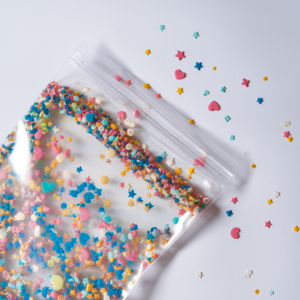
The Road Ahead: Innovation and Hope
Though the research on microplastics is concerning, there are reasons for optimism. A way ahead to address the expanding issue of plastic pollution and microplastic contamination is provided by creative solutions and stepped-up international initiatives. Let’s examine a few of these intriguing developments and approaches:
1. Innovations in Plastic Recycling
The development of plastic recycling technology is one of the main fields. Many plastics cannot be completely broken down by conventional recycling methods, and as a result, a large number of objects wind up in landfills or the ocean rather than being recycled. To overcome these restrictions, new recycling techniques are developing, though:
– Chemical recycling: Chemical recycling restores plastics to their original monomers, or building blocks, enabling limitless reuse without lowering the material’s quality. This is in contrast to mechanical recycling, which breaks down plastics into smaller pieces.
– Advanced sorting technologies: Developments like artificial intelligence (AI)-driven sorting systems make it easier to distinguish between various plastic types, increasing recycling rates. By doing this, it is ensured that more materials are recycled appropriately and that fewer materials enter ecosystems.
– Plastic-to-fuel conversion: In order to give discarded materials a new purpose, several researchers are investigating ways to turn waste plastics into fuels. These methods might offer more motivation to gather and recycle plastic garbage.
2. Biodegradable and Sustainable Materials
The emergence of biodegradable polymers that are intended to take the place of traditional plastics is another encouraging development. These novel materials lessen the accumulation of durable plastics by decomposing organically, either in the environment or by composting:
– Plant-based plastics: Advancements in bioplastics, which are made from renewable resources like algae, corn, or sugarcane, offer long-term substitutes for petroleum-based plastics. Certain bioplastics are engineered to break down in industrial composting settings, hence minimizing their ecological footprint.
– Edible packaging: Businesses are increasingly producing packaging composed of edible materials, such rice flour or seaweed, that may be ingested or disposed of without harming the environment.
– Water-soluble materials: A solution for single-use items like shopping bags or food wrappers is offered by several packaging innovations that use materials that dissolve safely in water. This provides a more environmentally friendly disposal option and avoids long-term environmental contamination.
3. More Advanced Filtering Technologies
Advanced filtration technologies are being created to assist remove microplastics from our water, air, and soil as scientists strive to reduce their prevalence in our environment:
– Nanofiltration membranes: Scientists are investigating the possibility of using nanotechnology to produce filtration membranes that are extremely efficient in capturing even the tiniest microplastic particles. By adding these membranes to water treatment systems, drinking water quality will be improved and aquatic habitats will be safeguarded.
– Air filtration systems: New developments in air filtration, such as sophisticated HVAC systems and HEPA filters, are being modified to remove microplastics from the air. This lessens the amount of airborne microplastics that are inhaled, especially indoors where concentrations may be higher.
– Microplastic capture in wastewater: There is a growing movement to enhance the capacity of wastewater treatment facilities to seize microplastics prior to their discharge into rivers and oceans. Modernized sewage systems and sophisticated filtration methods will be essential in reducing the amount of plastic pollution released into the environment.
4. Government Action and Global Cooperation
Globally, governments are starting to act more firmly to control the manufacture of plastic, enforce recycling laws, and promote the use of substitute materials. Several noteworthy instances consist of:
– Prohibitions on single-use plastics: A number of nations have already put limitations or prohibitions on items like straws, plastic bags, and silverware. The goal of these actions is to lower the amount of plastic garbage produced at the source.
– Extended producer responsibility (EPR): EPR regulations make producers responsible for managing the disposal and recycling of their plastic items throughout the course of their full life. This strategy pushes manufacturers to create more easily recyclable and environmentally friendly items.
– International agreements and collaborations: International initiatives, like the global plastic pollution treaty of the United Nations Environment Programme (UNEP), seek to bring nations together in their efforts to decrease plastic waste and promote innovation in sustainable practices. To address plastic pollution on a larger scale, cooperation between governmental bodies, non-profit organizations, and commercial enterprises is crucial.
5. Increased Public Awareness and Individual Action
Changes in lifestyle and individual actions can also help reduce plastic pollution as public awareness of microplastics rises. Consumers are choosing more environmentally friendly items, endorsing companies that put sustainability first, and forming daily routines that cut down on plastic waste:
– Demand for sustainable products driven by consumers: Businesses are encouraged to transition to sustainable alternatives as more consumers select products with eco-friendly or minimum packaging. The market will continue to be driven by innovation due to public demand for greener solutions.
– Education and community involvement: Citizen science initiatives, educational campaigns, and grassroots movements are all contributing to the growing awareness of plastic pollution. Individuals can contribute to good change by promoting awareness about the risks of microplastics, campaigning for stricter legislation, or taking part in beach cleanups.

Conclusion: A Future with Less Plastic
The discovery that microplastics have entered the human brain is extremely alarming and indicates the serious effects of plastic pollution. What was formerly thought to be an environmental problem has now turned into a serious public health hazard. The scientific discoveries made in 2024 showing microplastics can cross the blood-brain barrier represent a paradigm shift in our comprehension of the hazards associated with these imperceptible particles.
All facets of society must give neurological damage—from inflammation to cognitive impairment—urgent attention. Even though the precise processes and long-term effects of brain microplastic buildup are still being investigated, preliminary data suggests that there are significant health dangers, including the potential for aggravating neurodegenerative conditions like Parkinson’s and Alzheimer’s.
At every stage, action is required. Governments need to impose stricter laws on the manufacturing of plastics and the disposal of waste, businesses need to develop more environmentally friendly substitutes, and people need to modify their lifestyles to reduce their exposure. Choosing biodegradable items and utilizing water filters are only two little steps that can add up to a larger, collaborative effort to address this global catastrophe.
Microplastics in the brain serve as an example of how closely the environment and human health are linked. It is imperative that we address this issue in order to preserve not just our ecosystems but also the fundamental components of our brain and cognitive wellness. Although the fight against microplastics will be drawn out and difficult, we can reduce their negative effects on the environment and our health by continuing to innovate, research, and reform policies.
read more posts
FAQs with Answers
1. What are microplastics?
Microplastics are small plastic particles, typically less than 5mm in size, that originate from the breakdown of larger plastic objects or from microbeads found in products like cosmetics.
2. How do microplastics enter the human body?
Microplastics enter the body through ingestion, inhalation, and possibly through the skin. They are found in the food we eat, the water we drink, and even the air we breathe.
3. Can microplastics affect the brain?
Yes, recent research has shown that microplastics can breach the blood-brain barrier, potentially leading to inflammation and neurological damage.
4. How do microplastics cross the blood-brain barrier?
Microplastics may enter the brain by traveling through the nasal passages and olfactory bulb, bypassing the blood-brain barrier, a defense mechanism meant to protect the brain from harmful substances.
5. What are the health risks of microplastics in the brain?
Potential risks include inflammation, disrupted neural communication, and increased likelihood of developing neurodegenerative diseases like Alzheimer’s and Parkinson’s.
6. Are microplastics linked to any diseases?
While more research is needed, scientists suspect that microplastics may be linked to diseases like Alzheimer’s, Parkinson’s, and other neurodegenerative conditions.
7. What are the main sources of microplastic exposure?
The main sources of exposure include plastic packaging, synthetic textiles, polluted air, and contaminated water.
8. Can filtering water remove microplastics?
Yes, high-quality water filters, such as those with reverse osmosis, can reduce microplastic content in drinking water.
9. How can I reduce my microplastic exposure?
You can reduce exposure by using eco-friendly alternatives to plastics, drinking filtered water, avoiding plastic packaging, and opting for natural fibers over synthetic fabrics.
10. What are scientists recommending in 2024 to reduce microplastic pollution?
Scientists are urging governments to implement stricter regulations on plastic production, calling for research on health impacts, and recommending that individuals reduce their plastic use.
11. Are biodegradable plastics a solution to microplastic pollution?
Biodegradable plastics offer a partial solution, but they often require specific conditions to break down fully and may still leave behind microplastic fragments.
12. How long do microplastics last in the environment?
Microplastics can persist in the environment for hundreds of years, contributing to long-term pollution in oceans, soils, and air.
13. Can microplastics be eliminated from the body?
There is no current method to effectively remove microplastics from the human body, which is why prevention and reducing exposure are critical.
14. Are there any products free of microplastics?
Yes, products labeled as “plastic-free” or “microbead-free” are designed without microplastics. Opting for natural and organic alternatives can reduce your exposure.
15. What impact does microplastic pollution have on wildlife?
Microplastics affect wildlife by entering food chains, causing physical harm, toxicity, and sometimes death in animals that ingest or become entangled in plastic waste.

There is perceptibly a bundle to identify about this. I feel you made certain nice points in features also.
I also believe that mesothelioma cancer is a extraordinary form of cancers that is typically found in people previously familiar with asbestos. Cancerous cells form within the mesothelium, which is a protective lining that covers most of the body’s body organs. These cells generally form from the lining in the lungs, stomach, or the sac which encircles the heart. Thanks for giving your ideas.
Wonderful site. Lots of useful information here. I am sending it to some friends ans also sharing in delicious. And of course, thanks for your effort!
I do enjoy the manner in which you have framed this issue and it does indeed present us a lot of fodder for thought. Nonetheless, because of what I have personally seen, I just trust when the responses stack on that folks remain on point and not get started upon a soap box involving the news of the day. Still, thank you for this outstanding point and though I can not really concur with the idea in totality, I respect the perspective.
Wow! This could be one particular of the most beneficial blogs We have ever arrive across on this subject. Basically Great. I’m also an expert in this topic therefore I can understand your effort.
I have been surfing on-line more than three hours today, but I by no means found any fascinating article like yours. It抯 lovely worth enough for me. Personally, if all site owners and bloggers made excellent content as you probably did, the net will likely be much more useful than ever before.
Thank you for your articles. http://www.kayswell.com They are very helpful to me. Can you help me with something?
This really answered my downside, thanks!
Please tell me more about this. May I ask you a question? http://www.kayswell.com
Can you write more about it? Your articles are always helpful to me. Thank you! http://www.kayswell.com
Thank you for your articles. http://www.hairstylesvip.com They are very helpful to me. Can you help me with something?
I want to thank you for your assistance and this post. It’s been great. http://www.kayswell.com
Sweet blog! I found it while searching on Yahoo News. Do you have any tips on how to get listed in Yahoo News? I’ve been trying for a while but I never seem to get there! Appreciate it
Thank you for writing this post! http://www.hairstylesvip.com
Your articles are very helpful to me. May I request more information? http://www.ifashionstyles.com
You actually make it seem so easy with your presentation but I find this matter to be actually something that I think I would never understand. It seems too complex and very broad for me.I’m looking forward for your next post, I will try to get the hang of it!
After exploring a few of the blog articles on your site, I seriously like your technique of blogging. I book-marked it to my bookmark webpage list and will be checking back soon. Take a look at my website as well and let me know what you think.
Hello very nice web site!! Man .. Beautiful .. Amazing .. I will bookmark your site and take the feeds also? I am satisfied to seek out so many useful information here in the put up, we want work out extra techniques on this regard, thank you for sharing. http://www.kayswell.com
Can you be more specific about the content of your article? After reading it, I still have some doubts. Hope you can help me.
Your point of view caught my eye and was very interesting. Thanks. I have a question for you.